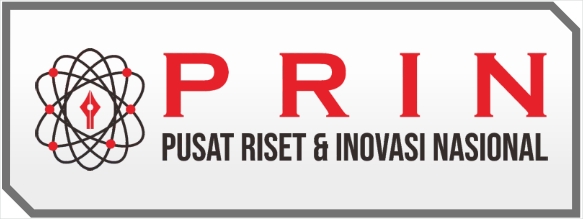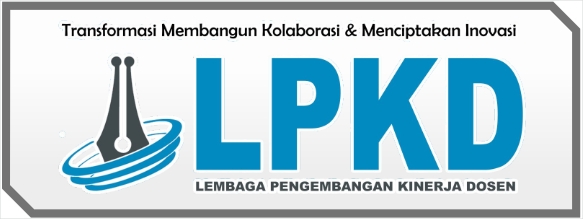Comparative Study of Natural Polymers and Titanium as a Medical Implant in Terms of Safety
DOI:
https://doi.org/10.55606/jurrike.v2i1.1034Keywords:
titanium, natural polymers, implant, biocompatibility, mechanical propertiesAbstract
Titanium has been utilized as an implant material because of its mechanical properties, corrosion resistance, and biocompatibility. However, there are some issues in using titanium for medical implants such as particle release that could be toxic to the native environment. Therefore, it is necessary to find safer substitute materials such as natural polymers, which are found to be great in biocompatibility and less toxic. In this paper, we discussed the safety characteristics such as biocompatibility, biodegradability, and mechanical properties for both materials. The source of information was gathered through online databases, PubMed, using keywords such as titanium, 3D bioprinting, and implant, and further screened with biocompatibility, mechanical characteristics, gelatin, fibrin, cellulose, alginate, agarose, silk, in-vitro and in-vivo. Journal publications that did not discuss biocompatibility, biodegradability, mechanical qualities, could not be opened, and were not research articles were excluded. The 9 journals were selected based on the inclusion, title, and abstract. It can be concluded that natural polymers could be a titanium alternative based on its safety characteristics. Further studies are required to do more research about their safety to be used as medical implant material.
References
Ahn, T. K., Lee, D. H., Kim, T. sup, Jang, G. chol, Choi, S. J., Oh, J. B., Ye, G., & Lee, S. (2018). Modification of Titanium Implant and Titanium Dioxide for Bone Tissue Engineering. Advances in Experimental Medicine and Biology, 1077, 355–368. https://doi.org/10.1007/978-981-13-0947-2_19
Albrektsson, T., Buser, D., Chen, S. T., Cochran, D., Debruyn, H., Jemt, T., Koka, S., Nevins, M., Sennerby, L., Simion, M., Taylor, T. D., & Wennerberg, A. (2012). Statements from the Estepona Consensus Meeting on Peri-implantitis, February 2-4, 2012. Clinical Implant Dentistry and Related Research, 14(6), 781–782. https://doi.org/10.1111/cid.12017
Amarnath, G., Muddugangadhar, B., Tripathi, S., Dikshit, S., & MS, D. (2011). Biomaterials for Dental Implants: An Overview. International Journal of Oral Implantology & Clinical Research, 2(1), 13–24. https://doi.org/10.5005/jp-journals-10012-1030
Ashammakhi, N., Ahadian, S., Xu, C., Montazerian, H., Ko, H., Nasiri, R., Barros, N., & Khademhosseini, A. (2019). Bioinks and bioprinting technologies to make heterogeneous and biomimetic tissue constructs. Materials Today Bio, 1. https://doi.org/10.1016/j.mtbio.2019.100008
Ashok Raj, J., Pottirayil, A., & Kailas, S. V. (2017). Dry Sliding Wear Behavior of Ti-6Al-4V Pin Against SS316L Disk at Constant Contact Pressure. Journal of Tribology, 139(2). https://doi.org/10.1115/1.4033363
Atieh, M. A., Alsabeeha, N. H. M., Faggion, C. M., & Duncan, W. J. (2012). The Frequency of Peri-Implant Diseases: A Systematic Review and Meta-Analysis. Journal of Periodontology, 1–15. https://doi.org/10.1902/jop.2012.120592
Benwood, C., Chrenek, J., Kirsch, R. L., Masri, N. Z., Richards, H., Teetzen, K., & Willerth, S. M. (2021). Natural biomaterials and their use as bioinks for printing tissues. Bioengineering, 8(2), 1–19. https://doi.org/10.3390/bioengineering8020027
Bertassoni, L. E., Cardoso, J. C., Manoharan, V., Cristino, A. L., Bhise, N. S., Araujo, W. A., Zorlutuna, P., Vrana, N. E., Ghaemmaghami, A. M., Dokmeci, M. R., & Khademhosseini, A. (2014). Direct-write bioprinting of cell-laden methacrylated gelatin hydrogels. Biofabrication, 6(2). https://doi.org/10.1088/1758-5082/6/2/024105
Bociaga, D., Bartniak, M., Grabarczyk, J., & Przybyszewska, K. (2019). Sodium alginate/gelatine hydrogels for direct bioprinting-the effect of composition selection and applied solvents on the bioink properties. Materials, 12(7). https://doi.org/10.3390/ma12172669
Campos, D. F. D., Blaeser, A., Korsten, A., Neuss, S., Jäkel, J., Vogt, M., & Fischer, H. (2015). The stiffness and structure of three-dimensional printed hydrogels direct the differentiation of mesenchymal stromal cells toward adipogenic and osteogenic lineages. Tissue Engineering - Part A, 21(3–4), 740–756. https://doi.org/10.1089/ten.tea.2014.0231
Can, A. A., & Ateş, G. B. (2016). Silk as a Natural Biopolymer for Tissue Engineering. Advanced Surfaces for Stem Cell Research, 381–400. https://doi.org/10.1002/9781119242642.ch13
Cecchinato, D., Parpaiola, A., & Lindhe, J. (2013). A cross-sectional study on the prevalence of marginal bone loss among implant patients. Clinical Oral Implants Research, 24(1), 87–90. https://doi.org/10.1111/j.1600-0501.2012.02457.x
Chi, J., Zhang, X., Wang, Y., Shao, C., Shang, L., & Zhao, Y. (2021). Bio-inspired wettability patterns for biomedical applications. Materials Horizons, 8(1), 124–144. https://doi.org/10.1039/d0mh01293a
Chimene, D., Lennox, K. K., Kaunas, R. R., & Gaharwar, A. K. (2016). Advanced Bioinks for 3D Printing: A Materials Science Perspective. Annals of Biomedical Engineering, 44(6), 2090–2102. https://doi.org/10.1007/s10439-016-1638-y
Cordeiro, R., Henriques, M., Silva, J. C., Antunes, F., Alves, N., & Moura, C. (2022). Corncob Cellulose Scaffolds: A New Sustainable Temporary Implant for Cartilage Replacement. Journal of Functional Biomaterials, 13(2). https://doi.org/10.3390/jfb13020063
Daly, A. C., Critchley, S. E., Rencsok, E. M., & Kelly, D. J. (2016). A comparison of different bioinks for 3D bioprinting of fibrocartilage and hyaline cartilage. Biofabrication, 8(4). https://doi.org/10.1088/1758-5090/8/4/045002
Das, S., Pati, F., Choi, Y. J., Rijal, G., Shim, J. H., Kim, S. W., Ray, A. R., Cho, D. W., & Ghosh, S. (2015). Bioprintable, cell-laden silk fibroin-gelatin hydrogel supporting multilineage differentiation of stem cells for fabrication of three-dimensional tissue constructs. Acta Biomaterialia, 11(1), 233–246. https://doi.org/10.1016/j.actbio.2014.09.023
De la Puente, P., & Ludeña, D. (2014). Cell culture in autologous fibrin scaffolds for applications in tissue engineering. Experimental Cell Research, 322(1), 1–11. https://doi.org/10.1016/j.yexcr.2013.12.017
de Melo, B. A. G., Jodat, Y. A., Cruz, E. M., Benincasa, J. C., Shin, S. R., & Porcionatto, M. A. (2020). Strategies to use fibrinogen as bioink for 3D bioprinting fibrin-based soft and hard tissues. Acta Biomaterialia, 117, 60–76. https://doi.org/10.1016/j.actbio.2020.09.024
Derks. (n.d.). A systematic review of current epidemiology. .
Desimone, E., Schacht, K., Jungst, T., Groll, J., & Scheibel, T. (2015). Biofabrication of 3D constructs: Fabrication technologies and spider silk proteins as bioinks. Pure and Applied Chemistry, 87(8), 737–749. https://doi.org/10.1515/pac-2015-0106
Dias Corpa Tardelli, J., Bolfarini, C., & Cândido dos Reis, A. (2020). Comparative analysis of corrosion resistance between beta titanium and Ti-6Al-4V alloys: A systematic review. Journal of Trace Elements in Medicine and Biology, 62. https://doi.org/10.1016/j.jtemb.2020.126618
Dissanayaka, W. L., & Zhang, C. (2020). Scaffold-based and Scaffold-free Strategies in Dental Pulp Regeneration. Journal of Endodontics, 46(9), S81–S89. https://doi.org/10.1016/j.joen.2020.06.022
Duan, B., Hockaday, L. A., Kang, K. H., & Butcher, J. T. (2013). 3D Bioprinting of heterogeneous aortic valve conduits with alginate/gelatin hydrogels. Journal of Biomedical Materials Research - Part A, 101 A(5), 1255–1264. https://doi.org/10.1002/jbm.a.34420
Friehs, E., AlSalka, Y., Jonczyk, R., Lavrentieva, A., Jochums, A., Walter, J. G., Stahl, F., Scheper, T., & Bahnemann, D. (2016). Toxicity, phototoxicity and biocidal activity of nanoparticles employed in photocatalysis. Journal of Photochemistry and Photobiology C: Photochemistry Reviews, 29, 1–28. https://doi.org/10.1016/j.jphotochemrev.2016.09.001
Ganesh, B. K. C., Ramanaih, N., & Chandrasekhar Rao, P. V. (2012). Dry sliding wear behavior of Ti-6Al-4V implant alloy subjected to various surface treatments. Transactions of the Indian Institute of Metals, 65(5), 425–434. https://doi.org/10.1007/s12666-012-0147-4
Gopinathan, J., & Noh, I. (2018). Recent trends in bioinks for 3D printing. Biomaterials Research, 22(1). https://doi.org/10.1186/s40824-018-0122-1
Guillotin, B., Souquet, A., Catros, S., Duocastella, M., Pippenger, B., Bellance, S., Bareille, R., Rémy, M., Bordenave, L., Amédée j, J., & Guillemot, F. (2010). Laser assisted bioprinting of engineered tissue with high cell density and microscale organization. Biomaterials, 31(28), 7250–7256. https://doi.org/10.1016/j.biomaterials.2010.05.055
Gungor-Ozkerim, P. S., Inci, I., Zhang, Y. S., Khademhosseini, A., & Dokmeci, M. R. (2018). Bioinks for 3D bioprinting: An overview. Biomaterials Science, 6(5), 915–946. https://doi.org/10.1039/c7bm00765e
Guo, S., Cai, C., Zhang, Y., Xiao, Y., & Qu, X. (2012). Biomedical Ti-24Nb-4Zr-7.9Sn alloy fabricated by conventional Powder Metallurgy and Spark Plasma Sintering. Key Engineering Materials, 520, 208–213. https://doi.org/10.4028/www.scientific.net/KEM.520.208
Hagenbuchner, J., Nothdurfter, D., & Ausserlechner, M. J. (2021). 3D bioprinting: novel approaches for engineering complex human tissue equivalents and drug testing. Essays in Biochemistry, 65(3), 417. https://doi.org/10.1042/EBC20200153
He, X., Reichl, F. X., Milz, S., Michalke, B., Wu, X., Sprecher, C. M., Yang, Y., Gahlert, M., Röhling, S., Kniha, H., Hickel, R., & Högg, C. (2020). Titanium and zirconium release from titanium- and zirconia implants in mini pig maxillae and their toxicity in vitro. Dental Materials, 36(3), 402–412. https://doi.org/10.1016/j.dental.2020.01.013
Hospodiuk, M., Dey, M., Sosnoski, D., & Ozbolat, I. T. (2017). The bioink: A comprehensive review on bioprintable materials. Biotechnology Advances, 35(2), 217–239. https://doi.org/10.1016/j.biotechadv.2016.12.006
Hussein, M. A., Mohammed, A. S., & Al-Aqeeli, N. (2015). Wear characteristics of metallic biomaterials: A review. Materials, 8(5), 2749–2768. https://doi.org/10.3390/ma8052749
Irvine, S. A., & Venkatraman, S. S. (2016). Bioprinting and differentiation of stem cells. Molecules, 21(9). https://doi.org/10.3390/molecules21091188
Isogai, A., & Bergström, L. (2018). Preparation of cellulose nanofibers using green and sustainable chemistry. Current Opinion in Green and Sustainable Chemistry, 12, 15–21. https://doi.org/10.1016/j.cogsc.2018.04.008
Janarthanan, G., Tran, H. N., Cha, E., Lee, C., Das, D., & Noh, I. (2020). 3D printable and injectable lactoferrin-loaded carboxymethyl cellulose-glycol chitosan hydrogels for tissue engineering applications. Materials Science and Engineering C, 113. https://doi.org/10.1016/j.msec.2020.111008
Jones, N. (2012). Science in three dimensions: The print revolution. Nature, 487(7405), 22–23. https://doi.org/10.1038/487022a
Khoeini, R., Nosrati, H., Akbarzadeh, A., Eftekhari, A., Kavetskyy, T., Khalilov, R., Ahmadian, E., Nasibova, A., Datta, P., Roshangar, L., Deluca, D. C., Davaran, S., Cucchiarini, M., & Ozbolat, I. T. (2021). Natural and Synthetic Bioinks for 3D Bioprinting. Advanced NanoBiomed Research, 1(8), 2000097. https://doi.org/10.1002/anbr.202000097
Kim, K. T., Eo, M. Y., Nguyen, T. T. H., & Kim, S. M. (2019). General review of titanium toxicity. International Journal of Implant Dentistry, 5(1). https://doi.org/10.1186/s40729-019-0162-x
Klein, G. T., Lu, Y., & Wang, M. Y. (2013). 3D printing and neurosurgery--ready for prime time? World Neurosurgery, 80(3–4), 233–235. https://doi.org/10.1016/j.wneu.2013.07.009
Lee, B. H., Lum, N., Seow, L. Y., Lim, P. Q., & Tan, L. P. (2016). Synthesis and characterization of types A and B gelatin methacryloyl for bioink applications. Materials, 9(10). https://doi.org/10.3390/ma9100797
Lee, J., Hong, J., Kim, W. J., & Kim, G. H. (2020). Bone-derived dECM/alginate bioink for fabricating a 3D cell-laden mesh structure for bone tissue engineering. Carbohydrate Polymers, 250. https://doi.org/10.1016/j.carbpol.2020.116914
Lee, K. Y., & Mooney, D. J. (2012). Alginate: Properties and biomedical applications. Progress in Polymer Science (Oxford), 37(1), 106–126. https://doi.org/10.1016/j.progpolymsci.2011.06.003
Lee Ventola, C. (2014). Medical applications for 3D printing: Current and projected uses. P and T, 39(10), 704–711.
Li, X., Ye, S., Yuan, X., & Yu, P. (2019). Fabrication of biomedical Ti-24Nb-4Zr-8Sn alloy with high strength and low elastic modulus by powder metallurgy. Journal of Alloys and Compounds, 772, 968–977. https://doi.org/10.1016/j.jallcom.2018.08.262
Li, X., Zhou, Y., Ebel, T., Liu, L., Shen, X., & Yu, P. (2020). The influence of heat treatment processing on microstructure and mechanical properties of Ti–24Nb–4Zr–8Sn alloy by powder metallurgy. Materialia, 13. https://doi.org/10.1016/j.mtla.2020.100803
López-Marcial, G. R., Zeng, A. Y., Osuna, C., Dennis, J., García, J. M., & O’Connell, G. D. (2018). Agarose-Based Hydrogels as Suitable Bioprinting Materials for Tissue Engineering. ACS Biomaterials Science and Engineering, 4(10), 3610–3616. https://doi.org/10.1021/acsbiomaterials.8b00903
Mandell, S. P., & Gibran, N. S. (2014). Fibrin sealants: Surgical hemostat, sealant and adhesive. Expert Opinion on Biological Therapy, 14(6), 821–830. https://doi.org/10.1517/14712598.2014.897323
Mao, Y. S., Wang, L., Chen, K. M., Wang, S. Q., & Cui, X. H. (2013). Tribo-layer and its role in dry sliding wear of Ti-6Al-4V alloy. Wear, 297(1–2), 1032–1039. https://doi.org/10.1016/j.wear.2012.11.063
Markstedt, K., Mantas, A., Tournier, I., Martínez Ávila, H., Hägg, D., & Gatenholm, P. (2015). 3D bioprinting human chondrocytes with nanocellulose-alginate bioink for cartilage tissue engineering applications. Biomacromolecules, 16(5), 1489–1496. https://doi.org/10.1021/acs.biomac.5b00188
Mehrotra N, S. S. (2022). Periodontitis.
Messous, R., Henriques, B., Bousbaa, H., Silva, F. S., Teughels, W., & Souza, J. C. M. (2021). Cytotoxic effects of submicron- and nano-scale titanium debris released from dental implants: an integrative review. Clinical Oral Investigations, 25(4), 1627–1640. https://doi.org/10.1007/s00784-021-03785-z
Mobaraki, M., Ghaffari, M., Yazdanpanah, A., Luo, Y., & Mills, D. K. (2020). Bioinks and bioprinting: A focused review. Bioprinting, 18. https://doi.org/10.1016/j.bprint.2020.e00080
Moraschini, V., Poubel, L. A. D. C., Ferreira, V. F., & Barboza, E. D. S. P. (2015). Evaluation of survival and success rates of dental implants reported in longitudinal studies with a follow-up period of at least 10 years: A systematic review. International Journal of Oral and Maxillofacial Surgery, 44(3), 377–388. https://doi.org/10.1016/j.ijom.2014.10.023
Mukherjee, S., Dhara, S., & Saha, P. (2018). Laser surface remelting of Ti and its alloys for improving surface biocompatibility of orthopaedic implants. Materials Technology, 33(2), 106–118. https://doi.org/10.1080/10667857.2017.1390931
Nair, M., & Elizabeth, E. (2015). Applications of titania nanotubes in bone biology. Journal of Nanoscience and Nanotechnology, 15(2), 939–955. https://doi.org/10.1166/jnn.2015.9771
Nichol, J. W., Koshy, S. T., Bae, H., Hwang, C. M., Yamanlar, S., & Khademhosseini, A. (2010). Cell-laden microengineered gelatin methacrylate hydrogels. Biomaterials, 31(21), 5536–5544. https://doi.org/10.1016/j.biomaterials.2010.03.064
Ozbolat, I. T. (2015). Scaffold-Based or Scaffold-Free Bioprinting: Competing or Complementing Approaches? Journal of Nanotechnology in Engineering and Medicine, 6(2). https://doi.org/10.1115/1.4030414
P., R., Ž.P., K., S., A., S., R., & M., B. (2018). Bioprinting of tissue engineering scaffolds. Journal of Tissue Engineering, 9.
Panwar, A., & Tan, L. P. (2016). Current status of bioinks for micro-extrusion-based 3D bioprinting. Molecules, 21(6). https://doi.org/10.3390/molecules21060685
Philip, J. T., Mathew, J., & Kuriachen, B. (2019). Tribology of Ti6Al4V: A review. Friction, 7(6), 497–536. https://doi.org/10.1007/s40544-019-0338-7
Piao, Y., You, H., Xu, T., Bei, H. P., Piwko, I. Z., Kwan, Y. Y., & Zhao, X. (2021). Biomedical applications of gelatin methacryloyl hydrogels. Engineered Regeneration, 2, 47–56. https://doi.org/10.1016/j.engreg.2021.03.002
Pichat, P. (2010). A brief survey of the potential health risks of TiO2 particles and TiO2- Containing photocatalytic or non-photocatalytic materials. Journal of Advanced Oxidation Technologies, 13(3), 238–246. https://doi.org/10.1515/jaots-2010-0302
Roberts, I. V., Bukhary, D., Valdivieso, C. Y. L., & Tirelli, N. (2020). Fibrin Matrices as (Injectable) Biomaterials: Formation, Clinical Use, and Molecular Engineering. Macromolecular Bioscience, 20(1). https://doi.org/10.1002/mabi.201900283
Roseti, L., Cavallo, C., Desando, G., Parisi, V., Petretta, M., Bartolotti, I., & Grigolo, B. (2018). Three-dimensional bioprinting of cartilage by the use of stem cells: A strategy to improve regeneration. Materials, 11(9). https://doi.org/10.3390/ma11091749
S.V., M., A., S., & A., A. (2013). Evaluation of hydrogels for bio-printing applications. Journal of Biomedical Materials Research - Part A, 101 A(1), 272–284.
Saini, M. (2015). Implant biomaterials: A comprehensive review. World Journal of Clinical Cases, 3(1), 52. https://doi.org/10.12998/wjcc.v3.i1.52
Sawkins, M. J., Mistry, P., Brown, B. N., Shakesheff, K. M., Bonassar, L. J., & Yang, J. (2015). Cell and protein compatible 3D bioprinting of mechanically strong constructs for bone repair. Biofabrication, 7(3). https://doi.org/10.1088/1758-5090/7/3/035004
Seol, Y. J., Kang, H. W., Lee, S. J., Atala, A., & Yoo, J. J. (2014). Bioprinting technology and its applications. European Journal of Cardio-Thoracic Surgery, 46(3), 342–348. https://doi.org/10.1093/ejcts/ezu148
Shi, L., Shi, L., Wang, L., Duan, Y., Lei, W., Wang, Z., Li, J., Fan, X., Li, X., Li, S., & Guo, Z. (2013). The Improved Biological Performance of a Novel Low Elastic Modulus Implant. PLoS ONE, 8(2). https://doi.org/10.1371/journal.pone.0055015
Shpichka, A., Butnaru, D., Bezrukov, E. A., Sukhanov, R. B., Atala, A., Burdukovskii, V., Zhang, Y., & Timashev, P. (2019). Skin tissue regeneration for burn injury. Stem Cell Research and Therapy, 10(1). https://doi.org/10.1186/s13287-019-1203-3
Shpichka, A., Osipova, D., Efremov, Y., Bikmulina, P., Kosheleva, N., Lipina, M., Bezrukov, E. A., Sukhanov, R. B., Solovieva, A. B., Vosough, M., & Timashev, P. (2020). Fibrin-based bioinks: New tricks from an old dog. International Journal of Bioprinting, 6(3), 1–14. https://doi.org/10.18063/IJB.V6I3.269
Singh, Y. P., Bandyopadhyay, A., & Mandal, B. B. (2019). 3D Bioprinting Using Cross-Linker-Free Silk-Gelatin Bioink for Cartilage Tissue Engineering. ACS Applied Materials and Interfaces, 11(37), 33684–33696. https://doi.org/10.1021/acsami.9b11644
Spotnitz, W. D. (2014). Fibrin Sealant: The Only Approved Hemostat, Sealant, and Adhesive—a Laboratory and Clinical Perspective. ISRN Surgery, 2014, 1–28. https://doi.org/10.1155/2014/203943
Sugiyono. (2019). Metode Penelitian Kuantitatif, Kualitatif, dan R&D (1st ed.). Penerbit Alfabeta.
Vanaei, S., Parizi, M. S., Vanaei, S., Salemizadehparizi, F., & Vanaei, H. R. (2021). An Overview on Materials and Techniques in 3D Bioprinting Toward Biomedical Application. Engineered Regeneration, 2, 1–18. https://doi.org/10.1016/j.engreg.2020.12.001
Wang, Q., Sun, J., Yao, Q., Ji, C., Liu, J., & Zhu, Q. (2018). 3D printing with cellulose materials. Cellulose, 25(8), 4275–4301. https://doi.org/10.1007/s10570-018-1888-y
Wilson, T. G., Valderrama, P., Burbano, M., Blansett, J., Levine, R., Kessler, H., & Rodrigues, D. C. (2015). Foreign Bodies Associated With Peri-Implantitis Human Biopsies. Journal of Periodontology, 86(1), 9–15. https://doi.org/10.1902/jop.2014.140363
Wu, Y., Lin, Z. Y. (William), Wenger, A. C., Tam, K. C., & Tang, X. (Shirley). (2018). 3D bioprinting of liver-mimetic construct with alginate/cellulose nanocrystal hybrid bioink. Bioprinting, 9, 1–6. https://doi.org/10.1016/j.bprint.2017.12.001
Wüst, S., Godla, M. E., Müller, R., & Hofmann, S. (2014). Tunable hydrogel composite with two-step processing in combination with innovative hardware upgrade for cell-based three-dimensional bioprinting. Acta Biomaterialia, 10(2), 630–640. https://doi.org/10.1016/j.actbio.2013.10.016
Yue, K., Trujillo-de Santiago, G., Alvarez, M. M., Tamayol, A., Annabi, N., & Khademhosseini, A. (2015). Synthesis, properties, and biomedical applications of gelatin methacryloyl (GelMA) hydrogels. Biomaterials, 73, 254–271. https://doi.org/10.1016/j.biomaterials.2015.08.045
Zarrintaj, P., Manouchehri, S., Ahmadi, Z., Saeb, M. R., Urbanska, A. M., Kaplan, D. L., & Mozafari, M. (2018). Agarose-based biomaterials for tissue engineering. Carbohydrate Polymers, 187, 66–84. https://doi.org/10.1016/j.carbpol.2018.01.060
Željka, P. ., Patrick, M. R., Said, A., Sujith, R., Ralf, S., Ole, J., Zrinka, I., & Mike, B. (2018). An Introduction to 3D Bioprinting: Possibilities, Challenges and Future Aspects. Materials, 11, 219.
Zhan, X., Li, S., Cui, Y., Tao, A., Wang, C., Li, H., Zhang, L., Yu, H., Jiang, J., & Li, C. (2020). Comparison of the osteoblastic activity of low elastic modulus Ti-24Nb-4Zr-8Sn alloy and pure titanium modified by physical and chemical methods. Materials Science and Engineering C, 113. https://doi.org/10.1016/j.msec.2020.111018
Zhang, Yahui; Yu, Yin; Akkouch, Adil; Dababneh, Amer; Dolati, Farzaneh; Ozbolat, I. (2012). In Vitro Study of Directly Bioprinted Perfusable Vasculature Conduits. 40(6), 1301–1315.
Zhang, B., Luo, Y., Ma, L., Gao, L., Li, Y., Xue, Q., Yang, H., & Cui, Z. (2018). 3D bioprinting: an emerging technology full of opportunities and challenges. Bio-Design and Manufacturing, 1(1), 2–13. https://doi.org/10.1007/s42242-018-0004-3
Zhang, H., Cheng, J., & Ao, Q. (2021). Preparation of alginate-based biomaterials and their applications in biomedicine. Marine Drugs, 19(5). https://doi.org/10.3390/md19050264
Zhang, K., Fu, Q., Yoo, J., Chen, X., Chandra, P., Mo, X., Song, L., Atala, A., & Zhao, W. (2017). 3D bioprinting of urethra with PCL/PLCL blend and dual autologous cells in fibrin hydrogel: An in vitro evaluation of biomimetic mechanical property and cell growth environment. Acta Biomaterialia, 50, 154–164. https://doi.org/10.1016/j.actbio.2016.12.008
Zhao, Y., Yao, R., Ouyang, L., Ding, H., Zhang, T., Zhang, K., Cheng, S., & Sun, W. (2014). Three-dimensional printing of Hela cells for cervical tumor model in vitro. Biofabrication, 6(3). https://doi.org/10.1088/1758-5082/6/3/035001
Zheng, Q., Mao, L., Shi, Y., Fu, W., & Hu, Y. (2022). Biocompatibility of Ti-6Al-4V titanium alloy implants with laser microgrooved surfaces. Materials Technology, 37(12), 2039–2048. https://doi.org/10.1080/10667857.2020.1816011
















